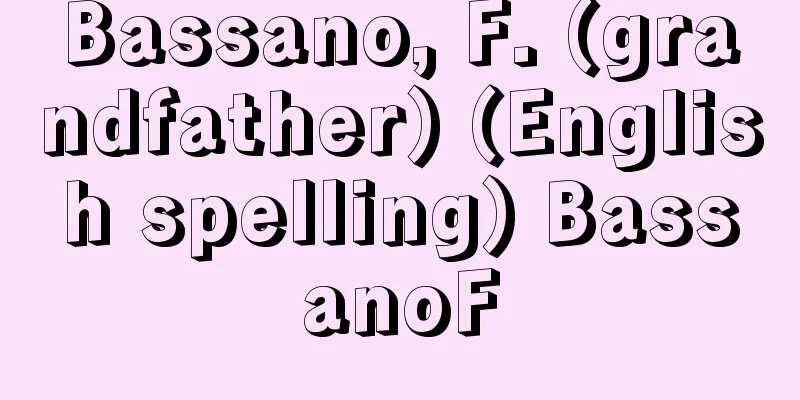Kokubunji

[1] [Noun] The official temples built in various provinces by Emperor Shomu on March 24, 741 (Tenpyo 13). (Tsuji Zennosuke believes that the Shoku Nihongi's statement that the Kokubunji was actually Tenpyo 13 is incorrect, but that it was Tenpyo 10.) There are monk temples and nunnery temples, and while the term usually refers to monk temples (Temples of the Golden Light Four Heavenly Kings Protecting the Country), in a broader sense it also includes Kokubun-ji Nunnery Temples (Temples of the Lotus Sutra to Mutilate the Sinners). The founding of Kokubunji was a project based on the belief in the Golden Light Sutra, which states that the Four Heavenly Kings will come and protect the country, but it also had the purpose of unifying the spiritual world on a national level. None of the original architecture remains, but ruins are scattered throughout the country. Kokubunji. *Shoku Nihongi - Tenpyo 13th year (741), January Dingyou "3,000 households donated money to one provincial temple in each province, and to build a 6,000cm tall Buddha statue as a gift " [2][1] A place name in the Musashino Plateau, almost in the center of Tokyo. Musashi Kokubunji Temple was located here. The cornerstone remains as a historic site. After World War II, the area became a commuter town for Tokyo and became an urban area. It was incorporated as a city in 1964 ( Showa 39 ). [2] A place name in the southern part of Tochigi Prefecture. Shimotsuke Kokubunji Temple and Kokubun Nunnery were located here. A producer of kanpyo and mulberry seedlings.KokubunjiSource: The Selected Edition of the Japanese Language Dictionary About the Selected Edition of the Japanese Language Dictionary Information |
[1] 〘名〙 聖武天皇が天平一三年(七四一)三月二四日詔して、諸国に造営させた官寺(「続日本紀」が天平一三年とするのは天平一〇年の誤りとする辻善之助の説がある)。僧寺と尼寺とがあり、通常は僧寺(金光明四天王護国之寺)を指すが、広義には国分尼寺(法華滅罪之寺)をも含めていう。国分寺創建は四天王が来て護国にあたる趣旨の金光明最勝王経の信仰に基づく事業であったが、精神界を国家的に統一する目的もあった。創建当時の建築で残っているものはないが、遺跡は全国に散在する。こくぶじ。※続日本紀‐天平一三年(741)正月丁酉「三千戸施二入諸国国分寺一、以充下造二丈六仏像一之料上」[2][一] 東京都のほぼ中部、武蔵野台地にある地名。武蔵国国分寺があった。礎石が史跡として残っている。第二次大戦後、東京のベッドタウンとして都市化が進んだ。昭和三九年(一九六四)市制。[二] 栃木県南部の地名。下野国国分寺・国分尼寺があった。かんぴょう、桑苗の産地。
こくぶ‐じ【国分寺】出典 精選版 日本国語大辞典精選版 日本国語大辞典について 情報 |
<<: National Treasure - Kokuhou
>>: Kokubunji [town] - Kokubunji
Recommend
Qarluq
...This Turkic stone inscription is the oldest kn...
Zhu De-run (English name)
[Birth] 1294 [Died] 1365 Chinese literati painter ...
Shafrir
Leader of the Indonesian Socialist Party. Born of ...
Groningen - Groningen (English spelling)
The capital of the province of Groningen in the n...
Masaryk, Tomáš Garrigue
Born: March 7, 1850, Hodonin, Moravia Died: Septem...
Rorippa dubia (English spelling) Rorippadubia
…[Murata Gen]. … *Some of the terminology that me...
Appeal - Koukoku
In procedural law, it refers to an appeal against...
Briolette of India
… [Ryu Shibusawa] [Famous Diamonds] There are man...
Cabin Cruiser
… A cruiser is generally a boat with sleeping fac...
《Cow Memorial Service》 - Ushikuyo
…In April of the same year, he chaired the first ...
Leder Karpfen (English spelling)
…These species were developed and improved long a...
Clan system
The term clan system is often used when clans are...
Meiki
Meaning vessels for the gods, these are dummy ves...
Sano
[1] A place name in the southern part of Tochigi P...
Junto
…However, he called himself “Franklin the Printer...


![Yokaichi [city] - Yokaichi](/upload/images/67cd1645f2b3a.webp)






